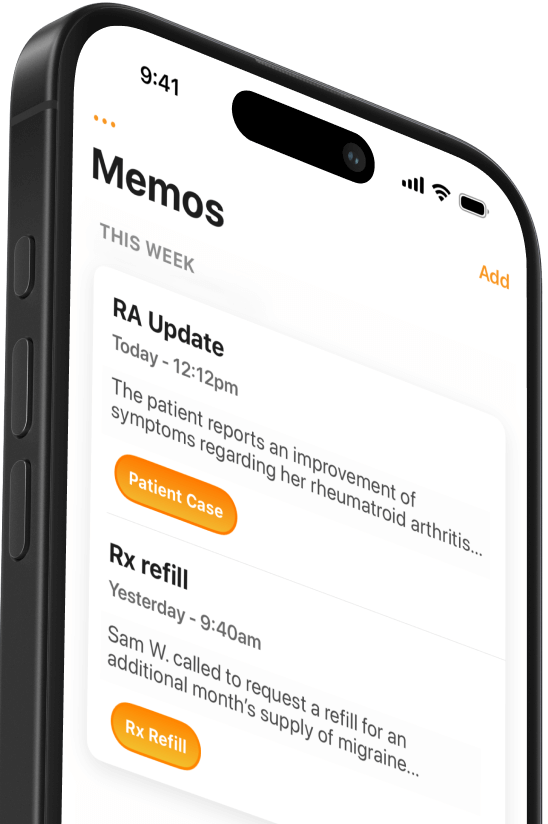Where did all the house calls go?
House calls are back, thanks to apps and cost-saving programs—blending convenience with modern, tech-driven care delivery.


Popular articles
A century ago, most physician encounters were house calls. But by the early 2000s, less than 18 percent of US doctors made home visits, and those that did averaged just five house calls per week.
So where did all the house calls go? As a study from Clinics in Geriatric Medicine explains, changes in technology, physician specialization, and payment systems made it more efficient to practice primary care in clinics.
Answers from a recent Quora thread show that common logic reflects published research pretty accurately. In response to the question ‘Why don’t doctors make house calls any more?’, medical professionals chime in with two answers: equipment and cost.
Charles Bollmann of University of New Jersey College of Medicine puts it bluntly: “It is not practical and does not pay.”
As another user responds, “It's horribly expensive on a per-patient basis; malpractice insurance isn't designed for this, and most medical professionals are trained to deliver care using equipment that isn't very portable.”
But scroll further down the thread and you find doctors responding that they do still make house calls. As Dr. Grey Riveria writes, “House calls are still alive! I thankfully received critical exposure to house calls during my first year of residency. In fact, I am now a house call doctor. My business is called My Doctor’s House, and it's the best job I've ever had!”
While Dr. Grey Riveria has created a kind of personalized private practice based around home visits, this isn’t the most common model. If you don’t count telemedicine and the many ways mHealth is virtually extending care into the home, modern house calls come in two flavors: start-ups offering convenience and hospital systems reducing costs.
Start-ups offer convenience with home visits
The past few years have seen new start-ups offering doctor house calls through a smartphone app. Examples include Los Angeles-based Heal, Pager in New York City, and Mend in Dallas. As the LA Times reports, these start-ups leverage mobile technology to offer convenience and clarity through health care visits in the home.
In the case of Heal, you open an app, schedule a visit, and a doctor shows up at your door within hours. Pager lets you chat with a nurse about your symptoms and decide whether a home visit or video consultation is the best option.
In both cases, the patient is charged a flat fee of about $50-200. As insurance plans’ deductibles have risen, people value the simplicity and clarity of knowing the price in advance.
Hospital systems cut costs of most expensive care
House calls aren’t just gaining popularity as a medical version of Uber - they also promise savings and improved care for the elderly and chronically ill. The New York Times goes as far as saying, “the house call is now a better idea than ever.”
This claim is justified for a certain population of patients. Medicare spends a third of its budget caring for chronically ill people in their last two years of life, and these expenses larger come from hospitalizations. So whatever keeps these patients out of the hospital can save money and provide a huge improvement in a patient’s quality of life.
Hospital systems and Medicare are realizing that if they can capture these savings, house calls make financial sense. One study found that for frail elderly people, house calls saved Medicare $4,200 per person per year. One of the oldest models is the Veterans Affairs Home Based Primary Care. As the New York Times reports, the system has the highest patient satisfaction rate of any Veterans Affairs service and has cut overall costs for patients in the program by nearly 12 percent.
House calls also offer a more appealing lifestyle for doctors, who can spend more time with patients and work on their own schedule. Sarah Grumet used to be a family doctor at a clinic in the Bronx. But working at her new practice, Doctors Making House Calls, she can spend more time with patients and makes $70,000 more than she did at her previous job.
Skeptics would point to projections of up to a 31,000 primary care doctor shortfall by 2025, arguing that the US can’t afford to be using physicians' time less efficiently. But if doctors could make more money, control their schedules better, and spend a satisfying amount of time with patients, they might be more inclined to choose primary care.
Related Articles


We Get Doctors Home on Time.
Contact us
We proudly offer enterprise-ready solutions for large clinical practices and hospitals.
Whether you’re looking for a universal dictation platform or want to improve the documentation efficiency of your workforce, we’re here to help.


